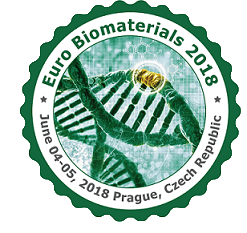
Annett Dorner-Reisel
Schmalkalden University of Applied Sciences ,Germany
Title: 3D printing and characterisation of scaffolds for stem cells
Biography
Biography: Annett Dorner-Reisel
Abstract
Calcium phosphate (CaP) scaffolds are superiour materials for stem cell differentiation into bone cells. CaP materials are similar to the mineral component of natural bone, which favours stem cell differentiation into bone cells. Doping the calcium phosphates with suitable elements regulates protein and cell reactions further. In CaP, Mg2+ promotes angiogenesis, Sr2+ favor’s osteogenesis. Si4+ creates charge imbalance, if PO4 3- are replaced with SiO4 4- , which leads to a more electronegative surface. 3D printing is a method for CaP scaffold production offering excellent possibilities for control of macroscopic geometry, micro- and macroporosity, mechanical integrity as well as special demand for patient individual scaffold designs. Ceramic powders can be processed by several additive manufacturing methods. In the presentation, additive manufacturing of scaffold biomaterials is reviewed, shortly. Special information is given for CaP scaffold production by powder fuded printing (PFP) using hydroxyapatite powder. For successful and precise printing by the PFP, ceramic powders need to fulfil several requirements, like grain and agglomerate size distribution or chemical composition for demanded binder-powder interactions. In the present study, CO3 2- and flour substitution are proven by FT-IR and Raman spectroscopy. The microstructure of the 3D printed scaffolds is further characterised by X-ray diffraction before and after sintering. Special highlight of the study is first testing with additional lignin. Dissolved lignin was infiltrated into the porous structure of two different 3D printed geometries. Tests with ST-2 mouse cells confirm a slightly better biocompatibility in comparison to 3D printed scaffolds without lignin treatment.

